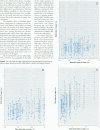Abstract
Copper is an essential trace element that may cause intoxication if intake becomes excessive. Young children are at risk of intoxication because of high consumption of drinking water and immature copper metabolism. The aims of this prospective study were to estimate concentrations of copper in drinking water, volumes of drinking water consumed by children, and children's daily intake of copper. Concentrations of copper in unflushed drinking water were analyzed for 1,178 children living in Uppsala and Malmö, Sweden, and concentrations and amounts of copper consumed from drinking water were estimated for 430 of these children, 9-21 months of age. The study children were from Swedish families, were not enrolled in publicly provided day care, and were not breast-fed more than three times a day. In the initial population, the 10th percentile for copper concentration in unflushed drinking water was 0.17 mg/L, the median was 0.72 mg/L, and the 90th percentile was 2.11 mg/L. In the subpopulation of 430 children, the 10th percentile for daily intake of copper from drinking water was 0.03 mg/L, the median was 0.32 mg/L, and the 90th percentile was 1.07 mg/L. The median daily intake of copper from drinking water was higher in Uppsala, at 0.46 mg, than in Malmö, at 0.26 mg. For groups of children whose families took part in a later prospective diary study, the copper concentration in consumed water could, to some extent, be predicted from the concentration of copper in unflushed drinking water. The lowest concentrations of copper in drinking water were found in households with old water-pipe systems and in those living in detached houses. A large proportion of the young children satisfied their daily requirement of copper solely from drinking water. About 10% of the children had a copper intake above the level recommended by the World Health Organization.
Full text
PDF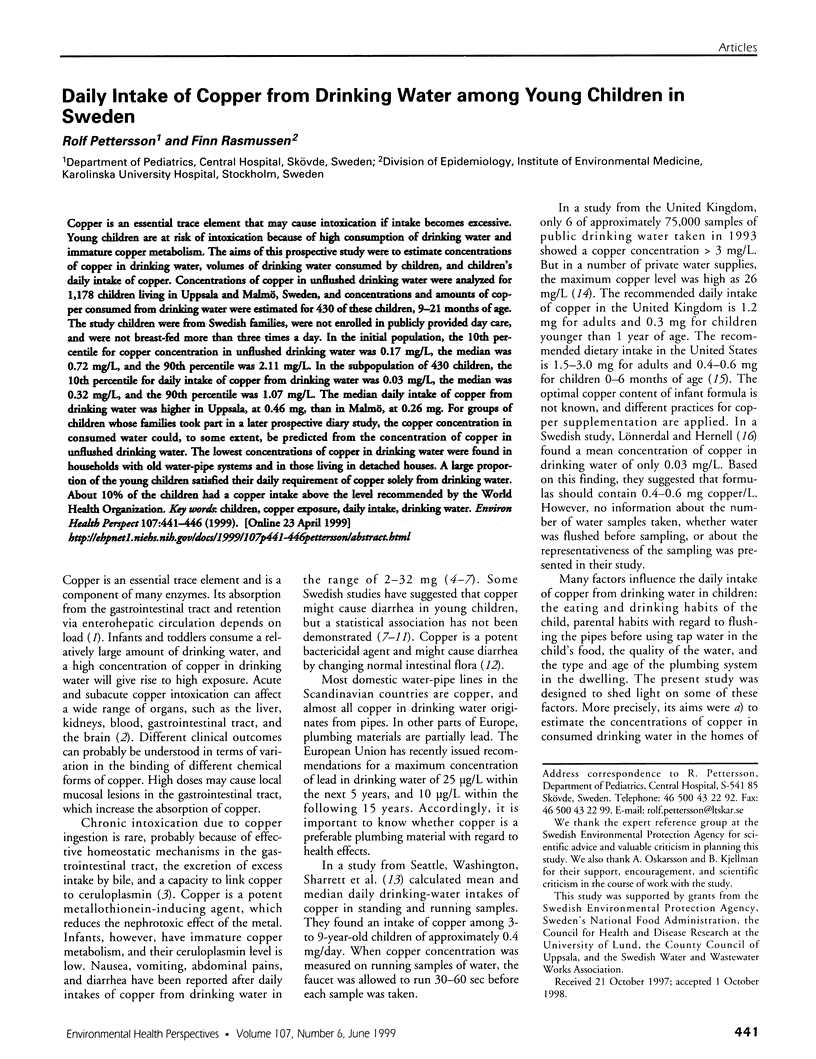
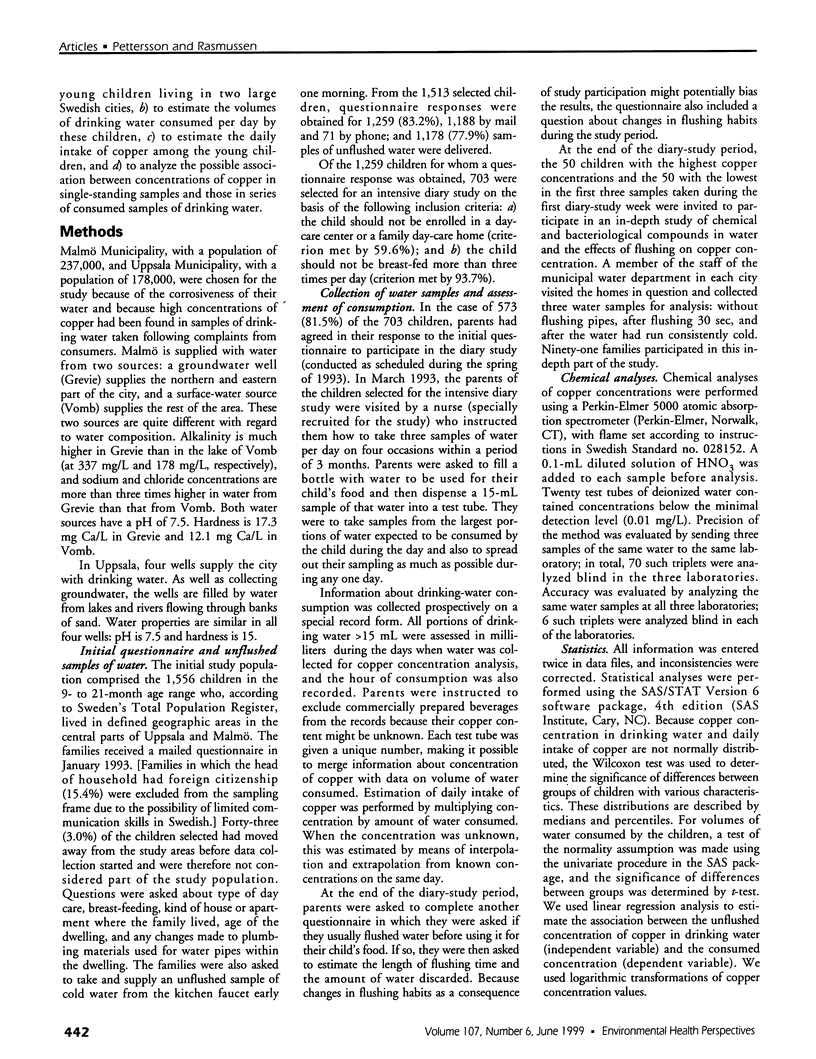
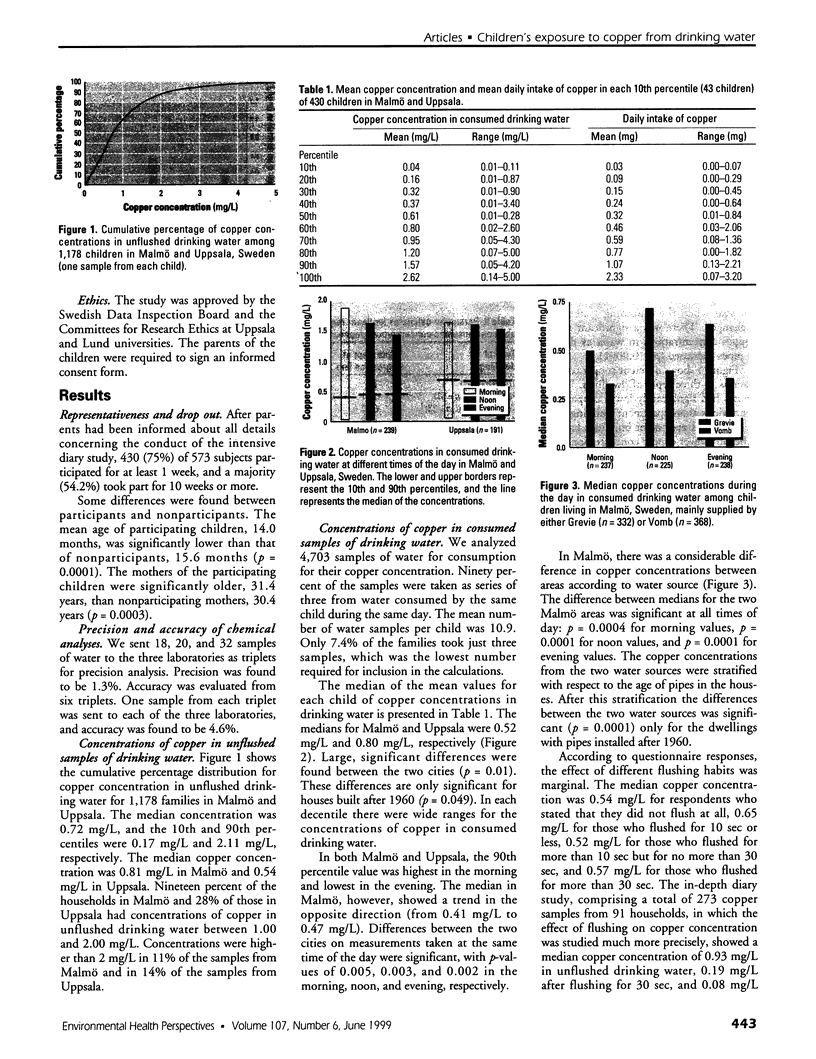
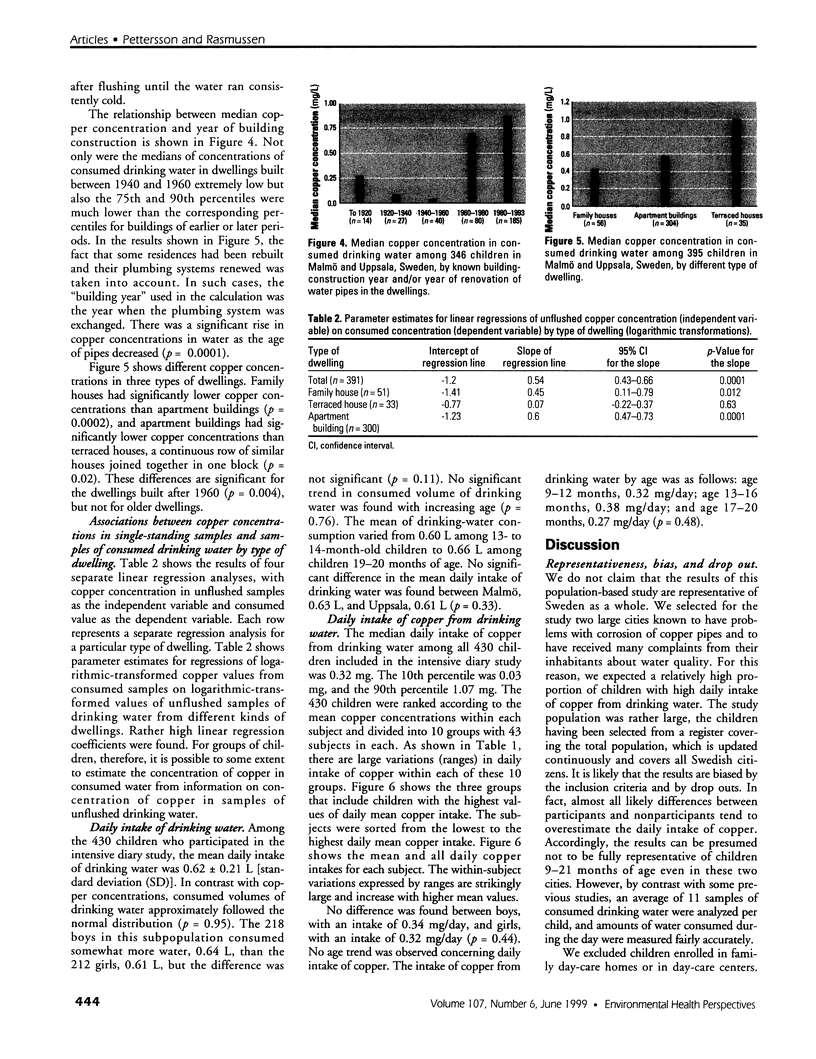
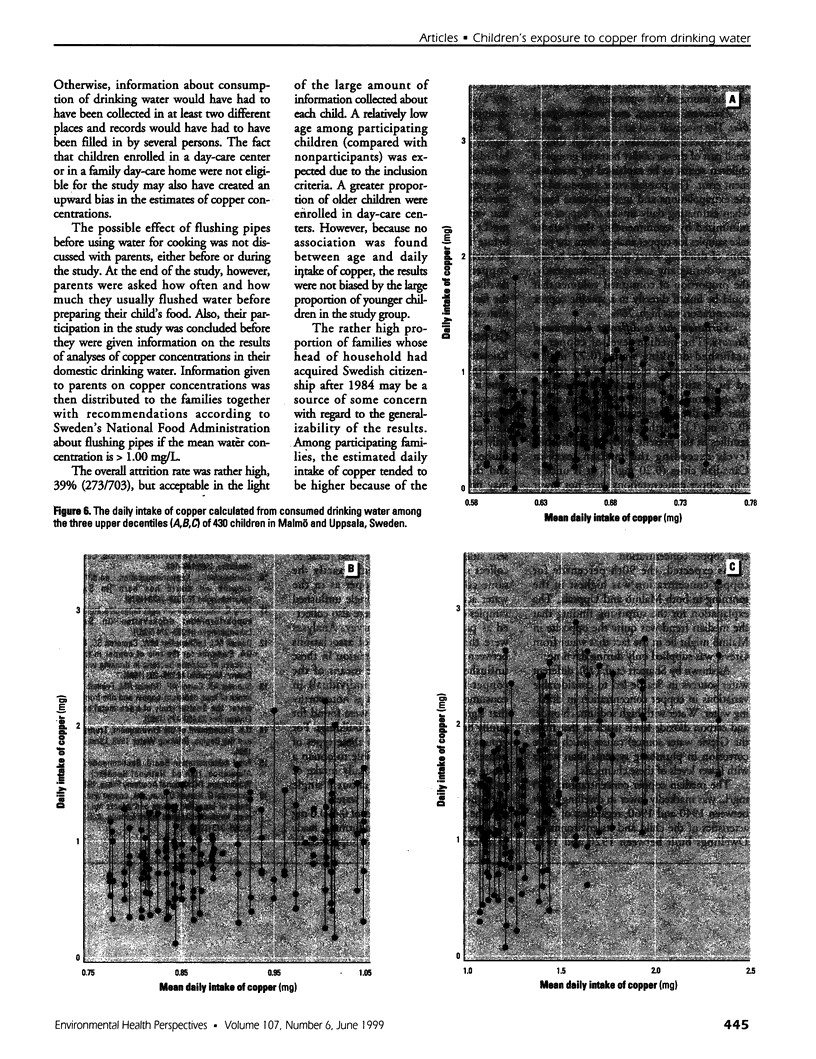
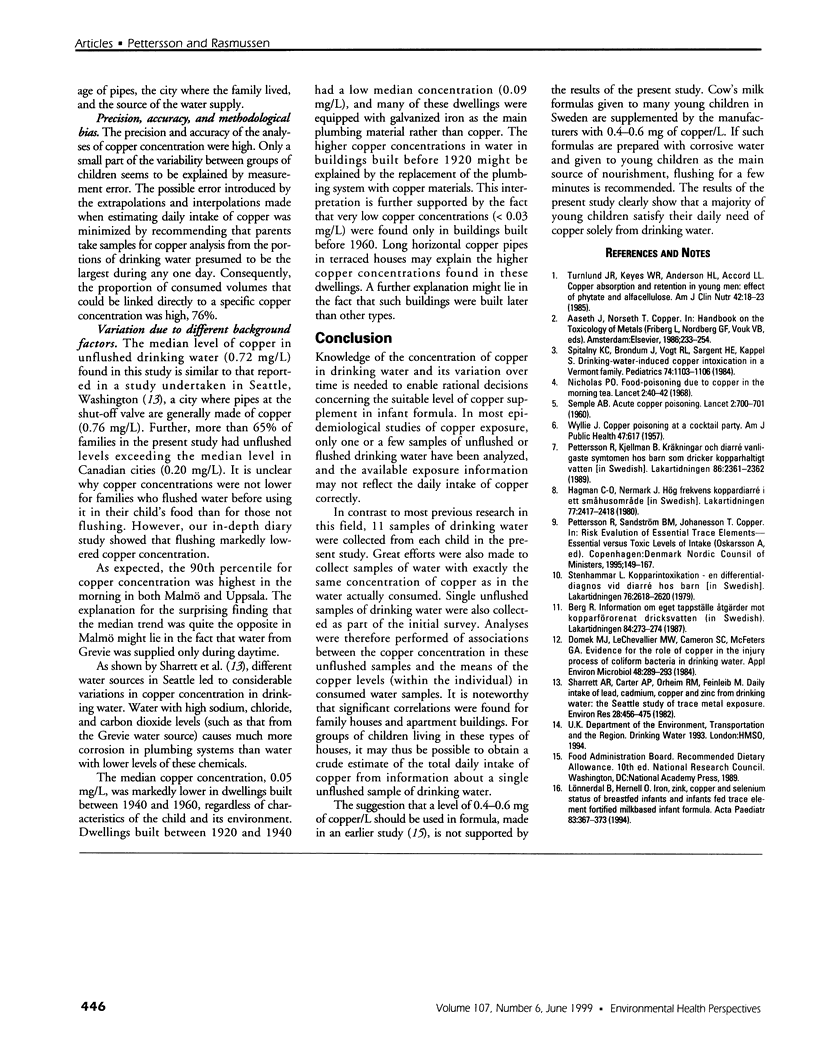
Images in this article
Selected References
These references are in PubMed. This may not be the complete list of references from this article.
- Domek M. J., LeChevallier M. W., Cameron S. C., McFeters G. A. Evidence for the role of copper in the injury process of coliform bacteria in drinking water. Appl Environ Microbiol. 1984 Aug;48(2):289–293. doi: 10.1128/aem.48.2.289-293.1984. [DOI] [PMC free article] [PubMed] [Google Scholar]
- Lönnerdal B., Hernell O. Iron, zinc, copper and selenium status of breast-fed infants and infants fed trace element fortified milk-based infant formula. Acta Paediatr. 1994 Apr;83(4):367–373. doi: 10.1111/j.1651-2227.1994.tb18121.x. [DOI] [PubMed] [Google Scholar]
- Nicholas P. O. Food-poisoning due to copper in the morning tea. Lancet. 1968 Jul 6;2(7558):40–42. doi: 10.1016/s0140-6736(68)92905-x. [DOI] [PubMed] [Google Scholar]
- Pettersson R., Kjellman B. Kräkningar och diarré vanligaste symtomen hos barn som dricker kopparhaltigt vatten. Lakartidningen. 1989 Jun 21;86(25):2361–2362. [PubMed] [Google Scholar]
- SEMPLE A. B., PARRY W. H., PHILLIPS D. E. Acute copper poisoning. An outbreak traced to contaminated water from a corroded geyser. Lancet. 1960 Sep 24;2(7152):700–701. doi: 10.1016/s0140-6736(60)91770-0. [DOI] [PubMed] [Google Scholar]
- Sharrett A. R., Carter A. P., Orheim R. M., Feinleib M. Daily intake of lead, cadmium, copper, and zinc from drinking water: The Seattle Study of Trace Metal Exposure. Environ Res. 1982 Aug;28(2):456–475. doi: 10.1016/0013-9351(82)90142-6. [DOI] [PubMed] [Google Scholar]
- Spitalny K. C., Brondum J., Vogt R. L., Sargent H. E., Kappel S. Drinking-water-induced copper intoxication in a Vermont family. Pediatrics. 1984 Dec;74(6):1103–1106. [PubMed] [Google Scholar]
- Stenhammar L. Kopparintoxikation--en differentialdiagnos vid diarré hos barn. Lakartidningen. 1979 Jul 25;76(30-31):2618–2620. [PubMed] [Google Scholar]
- Turnlund J. R., King J. C., Gong B., Keyes W. R., Michel M. C. A stable isotope study of copper absorption in young men: effect of phytate and alpha-cellulose. Am J Clin Nutr. 1985 Jul;42(1):18–23. doi: 10.1093/ajcn/42.1.18. [DOI] [PubMed] [Google Scholar]








